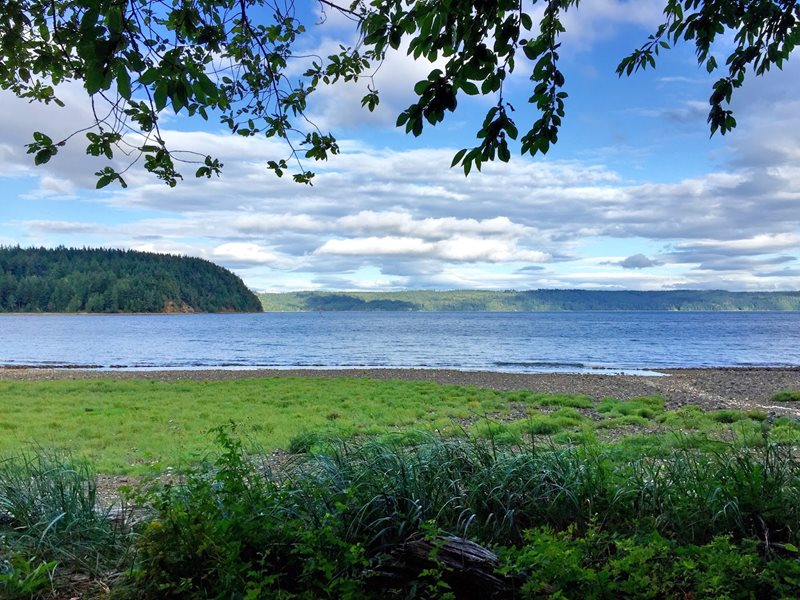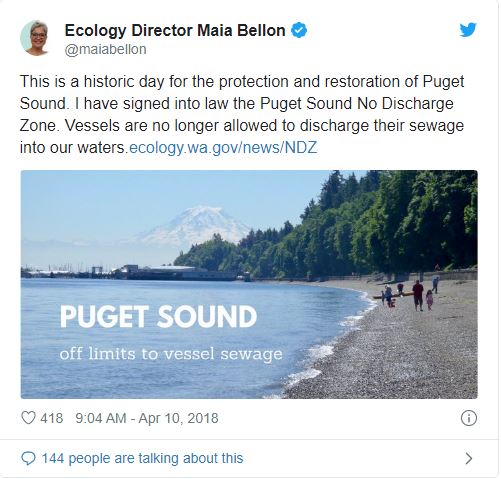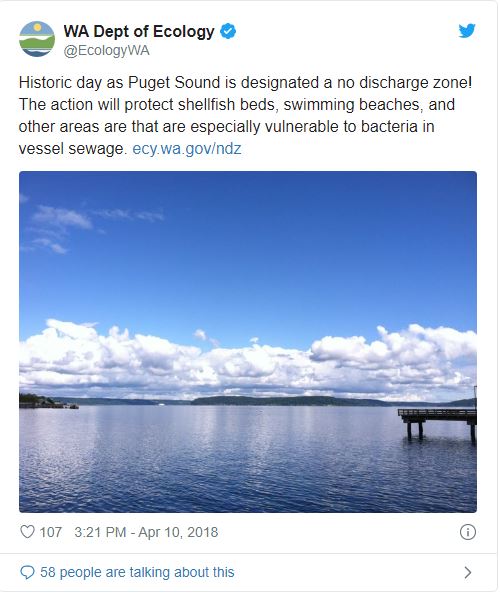
Puget Sound officially a No Discharge Zone
Puget Sound is a special place that provides natural and cultural resources and a place many people call home. The Sound is also home to thousands of species of plants and animals. The waters and beaches of Puget Sound are used for recreation. The area is also a place of commerce, as vessels conduct business around the clock, and shellfish are grown and harvested.
Because of it’s unique characteristics, the waters of Puget Sound don’t mix with the open ocean as much as other areas. When pollution enters the Sound, it often takes longer to move out or dilute. One burdensome source of pollution is sewage released from boats. Vessel sewage can contain bacteria and viruses that are harmful to people and the environment. These contaminants a harmful to water quality, beaches and shellfish beds. Eating shellfish that have been exposed to pollution can make people sick. The presence of one type of bacteria, fecal coliform, has closed shellfish beds throughout Puget Sound.
Creating a No Discharge Zone (NDZ) would protect shellfish beds, swimming beaches, and other areas that are especially vulnerable. Establishing an NDZ is a near term action on the Puget Sound Partnership's Action Agenda and is highlighted in the Washington Shellfish Initiative. We researched and prepared the NDZ petition with a grant from the Washington Department of Health, funded by EPA’s National Estuary Program.
Protecting the Sound
Director Maia Bellon signing the No Discharge Zone
rule April 9, 2018
With Ecology’s final proposal in 2016, EPA received more than 40,000 comments on the proposed Puget Sound NDZ. EPA approved the proposal in February 2017. On April 9, 2018 Ecology Director Maia Bellon signed the Puget Sound No Discharge Zone rule. The rule becomes effective May 10, 2018. There are 90 no discharge zones across 26 states. This zone is the first in Washington.
Under the historic new rule, vessels are prohibited from releasing any sewage (blackwater), treated or untreated, within Puget Sound. In addition to the discharge ban, the rule also establishes the boundaries of the NDZ, how to close marine sanitation devices, and enforcement authority.
“Making Puget Sound a no-discharge zone for vessel sewage connects a missing piece in our strategy to clean up and restore the Sound,” said Heather Bartlett, the water quality program manager at Ecology. “This will prevent pollution from impacting the Sound and will protect human health and overall water quality.”
The Washington Department of Health expects to upgrade or open approximately 1,000 acres of commercial shellfish beds for harvesting near marinas with the establishment of the NDZ.
What this means for vessels
Starting May 10, vessels looking to release their sewage loads will need to use a pump-out station or discharge outside the zone. One question vessel owners and operators may have is the availability of pump-out stations. In its review of our proposal, EPA verified that Puget Sound has adequate pumpout facilities to handle the needs of the area. Our website contains information on pumpout options, including locations. You can also find additional information at pumpoutwashington.org.
While in the NDZ, vessels must secure their marine sanitation device.
Some commercial vessels will have until 2023 to comply with the new rule. Those vessels include tug boats, commercial fishing vessels, small commercial passenger vessels, as well as NOAA research and survey vessels. More on these types of vessels can be found on our website.
Under the new No Discharge Zone rule, there is no change to graywater dumping requirements.




